
Okay, Gardeners, stop us if you’ve heard this one.
In the spring, an enthusiastic gardener dumps a whole packet of lettuce seed in a long row in the garden. Mostly all of it comes up – hooray! Weeks later, the gardener spends considerable time thinning out 90% of the sprouts to the suggested thin-to distance on the seed packet. Now that she’s thinned the row, there’s plenty of room for weeds (purslane and lambsquarters anyone?), so she spends time each week, trying to keep the long row weeded. A short while after that, her garden is just brimming with mature, bright green lettuce heads – a daunting number of them, in fact. She begins eating salads daily, even working them into her breakfast meal. She gives the greens away to family. To friends. To neighbors. To unsuspecting coworkers. But try as she might, she can’t get rid of it all before the hot weather encourages the remaining heads to flower. A good portion of her once-beautiful lettuce winds up bolted and in the compost bin.
But that’s a success, right?
In the late 1970s, Mel Bartholomew wasn’t so sure. He saw the cycle of over-planting happen with such regularity in his community garden – wasted seed, so much back-breaking labor, and, if people managed to stay motivated until harvest time, often wasted produce – that he was inspired to develop a method of gardening with the goal of producing more harvest in less space with less work. He called it square foot gardening.
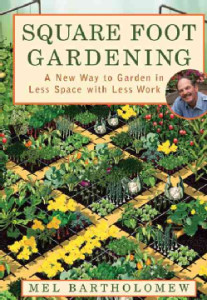
If you’re familiar with Growing Places, you might already know or use the square foot gardening method. We like this system because it removes a lot of the guesswork around plant spacing and location, which are often the most intimidating decisions for beginner gardeners. By getting the spacing and location right, you also drastically cut down on weeds and on the need for excessive thinning, i.e. that motivation-sapping, back-breaking work we mentioned earlier.
HOW IT WORKS
It’s all about the grid. To use the square foot gardening method, you begin by dividing your garden bed into a grid of 1-foot-by-1-foot squares. In our Teaching Gardens, we make our grids with simple materials: twine and nails. The twine is un-dyed jute, which holds up well for the season, but will break down during the winter and eventually be worked back into the soil the following spring. A roll of twine costs roughly $2.00.
Once the grid is in place, you can start your garden plan by referring to the square foot gardening spacing rules (available in our Growing Guide). Each crop variety gets its own square, or in the case of the largest crops, like vining squash, squares. Large crops, like tomatoes and broccoli, require one whole square in your garden in order to give them sufficient nutrients and space for air circulation. Meanwhile, smaller plants, like carrots, are much chummier and can squeeze in sixteen plants to a square.
Dividing your garden real estate this way makes it easy to plan out what will go where and to maximize the variety of vegetables, herbs and flowers in your garden. You can also keep an eye toward companion plants that grow well next to each other and incompatible plants that shouldn’t be near each other. We’ve put together a handy chart in our Growing Guide if you’re interesting in knowing more.
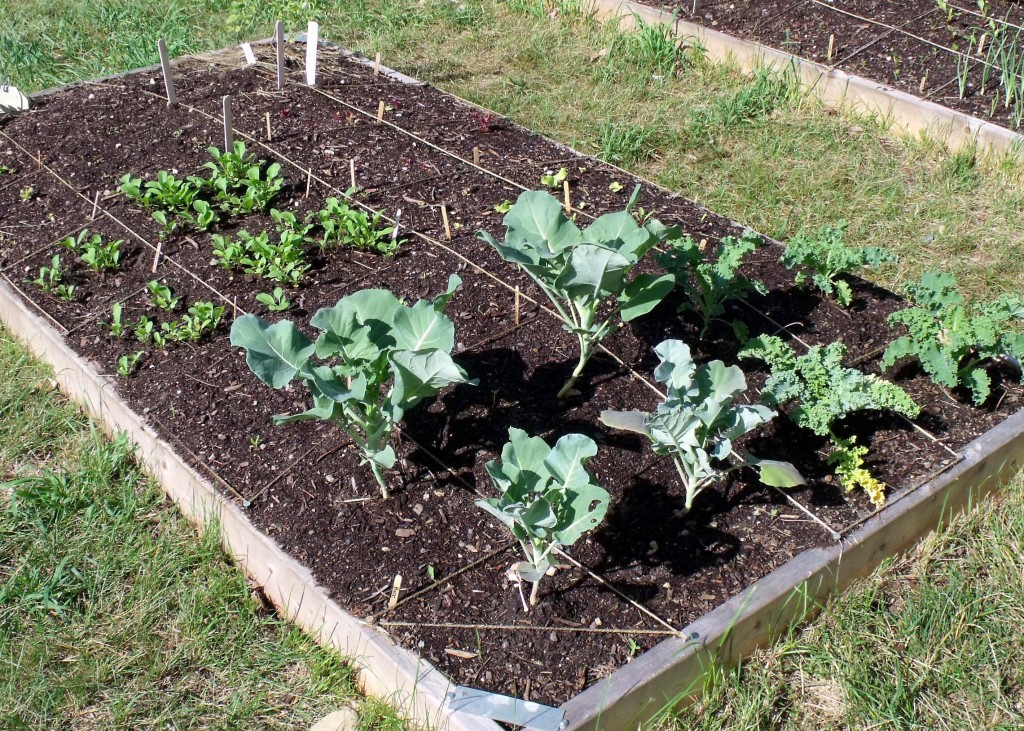
Knowing how many plants will go in each square also gives you a good sense of what the square’s yield will be, which in turn gives you enough information to decide how many squares of each crop you’ll want to plant. For example, if you want onions for winter storage, you might plant several squares of them. If you love lettuce, but can’t consume it quickly, you might plant several squares, but in stages, or in succession, so your harvest is spread out over a longer period of time. This gives you a better shot at eating it all, or at least at giving some of it away.
When a square is completely harvested, it opens up for re-planting with another seasonal crop. Done with lettuce? Throw in some radishes. In three to four weeks, harvest those and think about a fall crop of something else going in that square to get the most out of your garden space.
And it’s as easy as that. Discrete squares. Defined spacing. A realistic plan for what you can (and want to) eat and you have a successful, small-space-suited, square foot garden.
We’ve been growing them for 14 years at GP and, while it’s not the only way to garden, we’ve been pretty pleased with it for the small-space home gardener.

As with any gardening method, it’s a good idea to make some notes as you go. Did your broccoli get too big for its square? Did you like planting your tomatoes in a row for easy staking? Make a note this year so you can make improvements to your plan next year.
If you’ve tried the square foot method at home, do you have any spacing tips or suggestions? Mishaps? Share in the comments.
Up next, our very own North Central MA urban gardens pest patrol. We’ll let you know what pests we’re seeing and what we’re doing about it.
‘Til then, happy gardening!
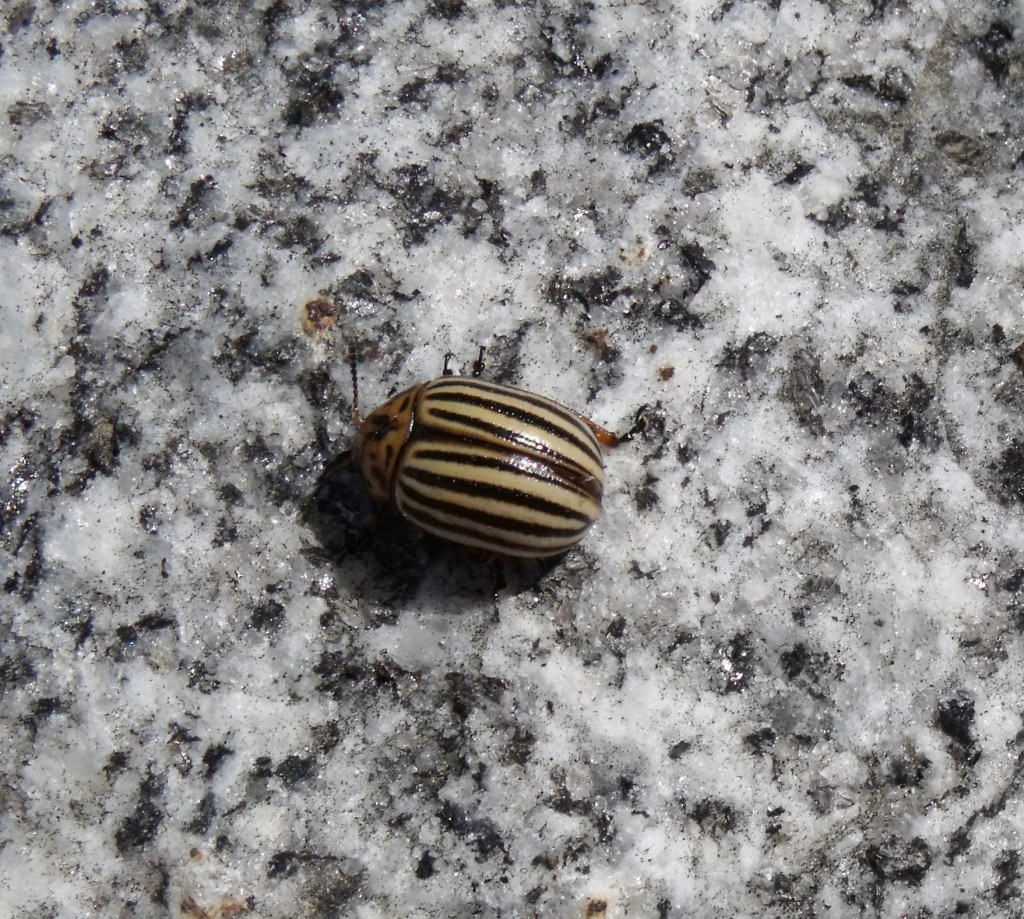
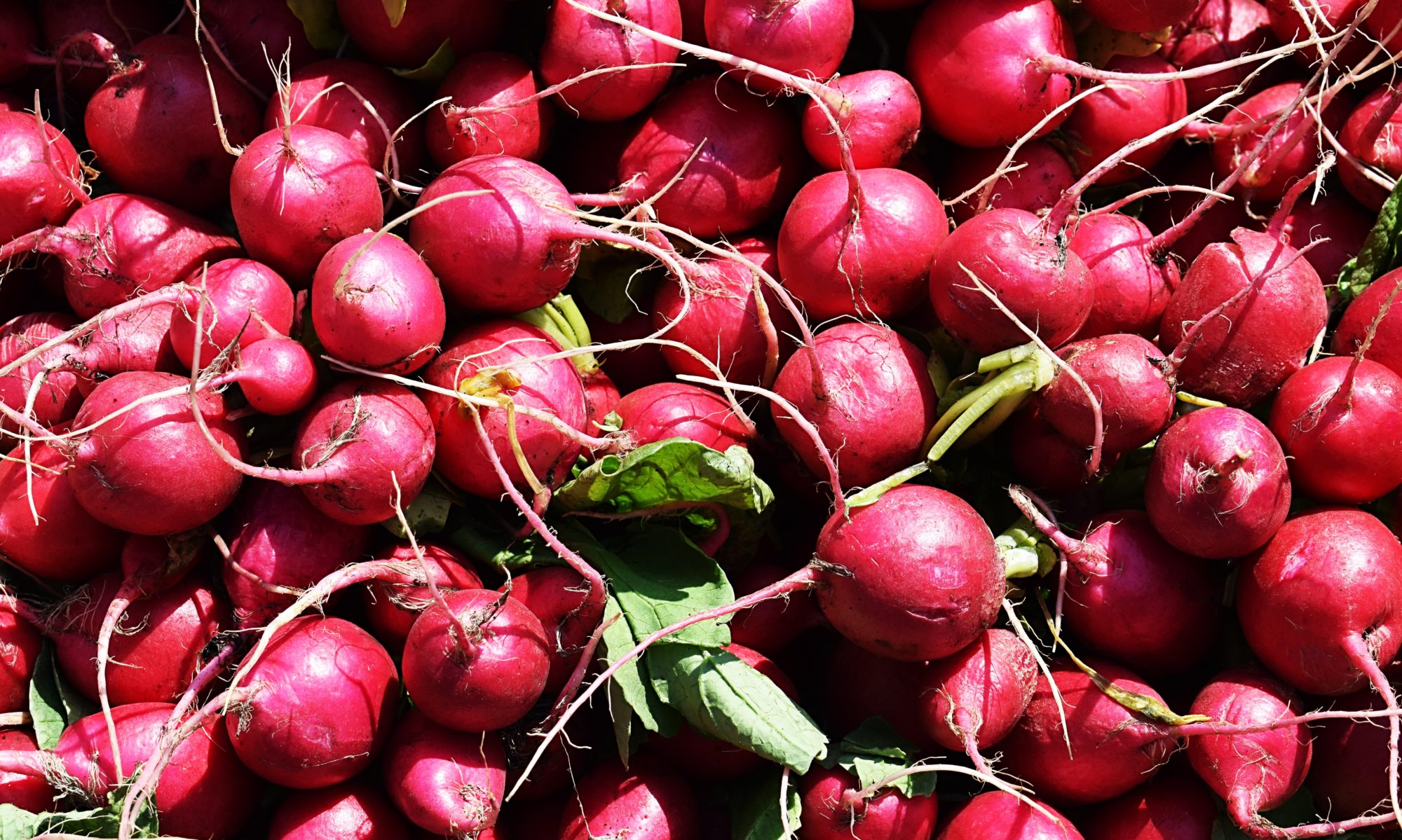
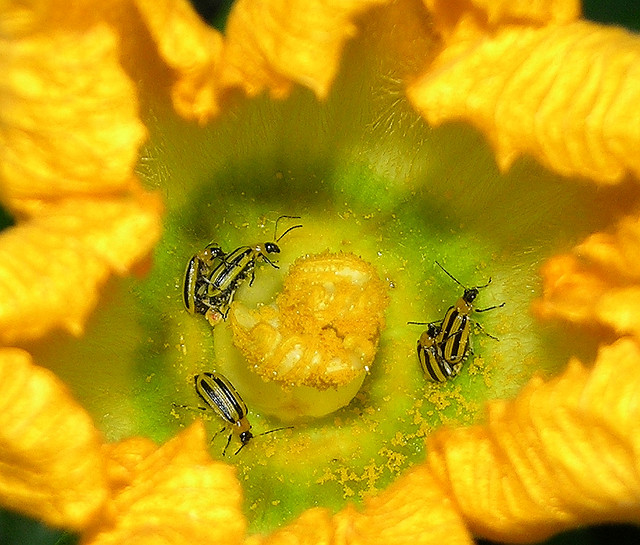
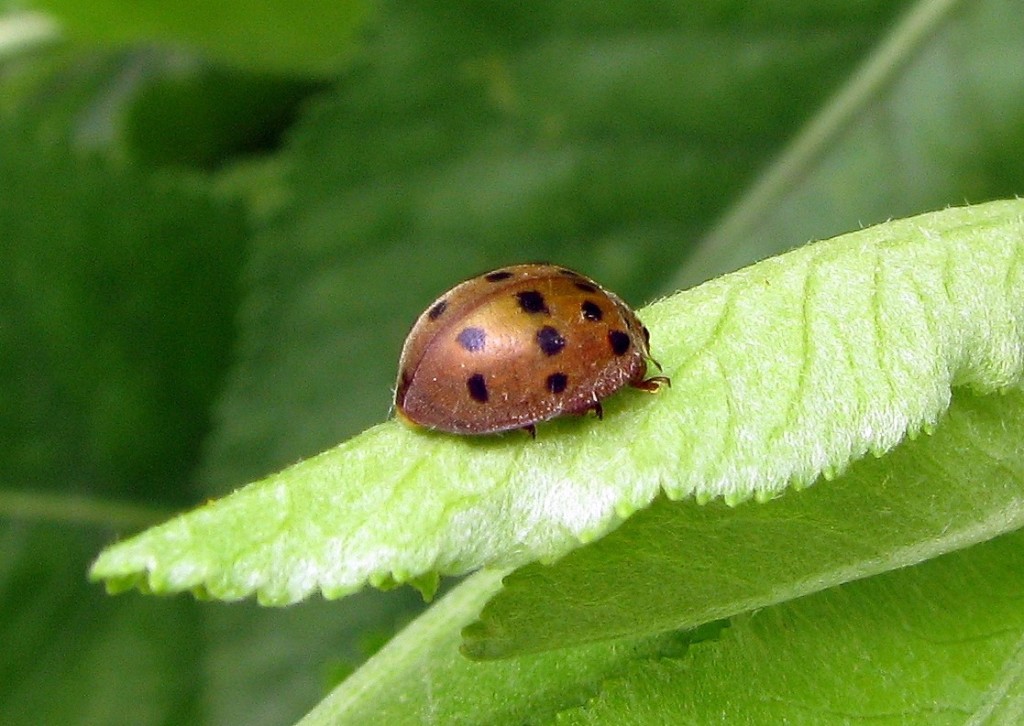

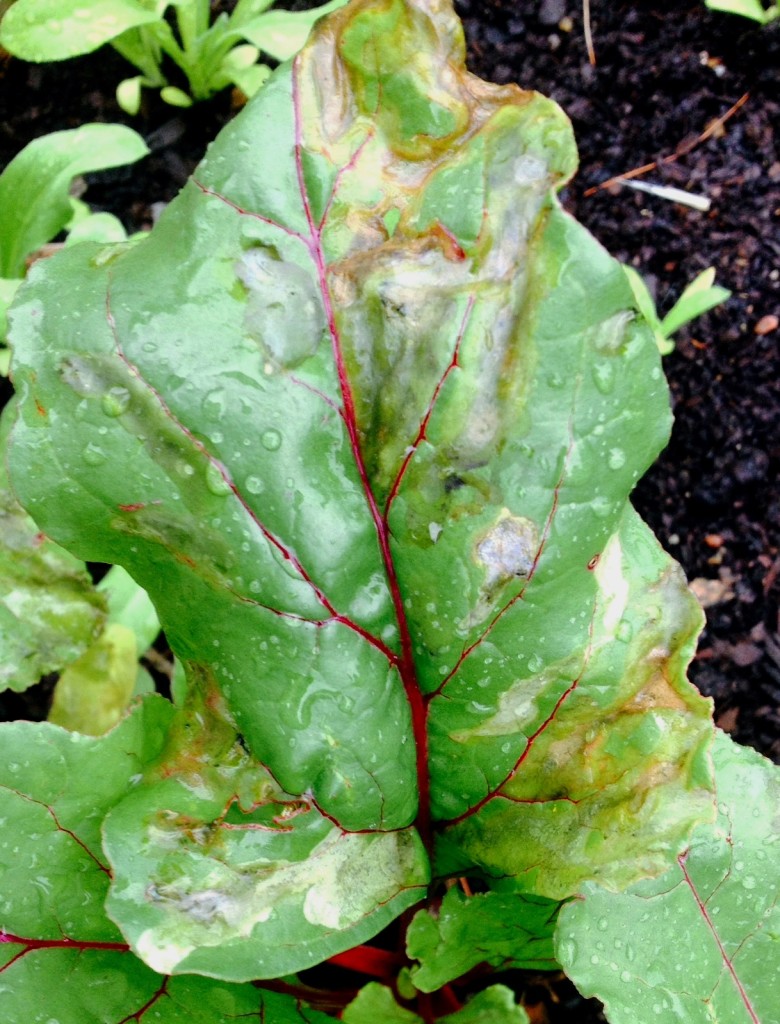
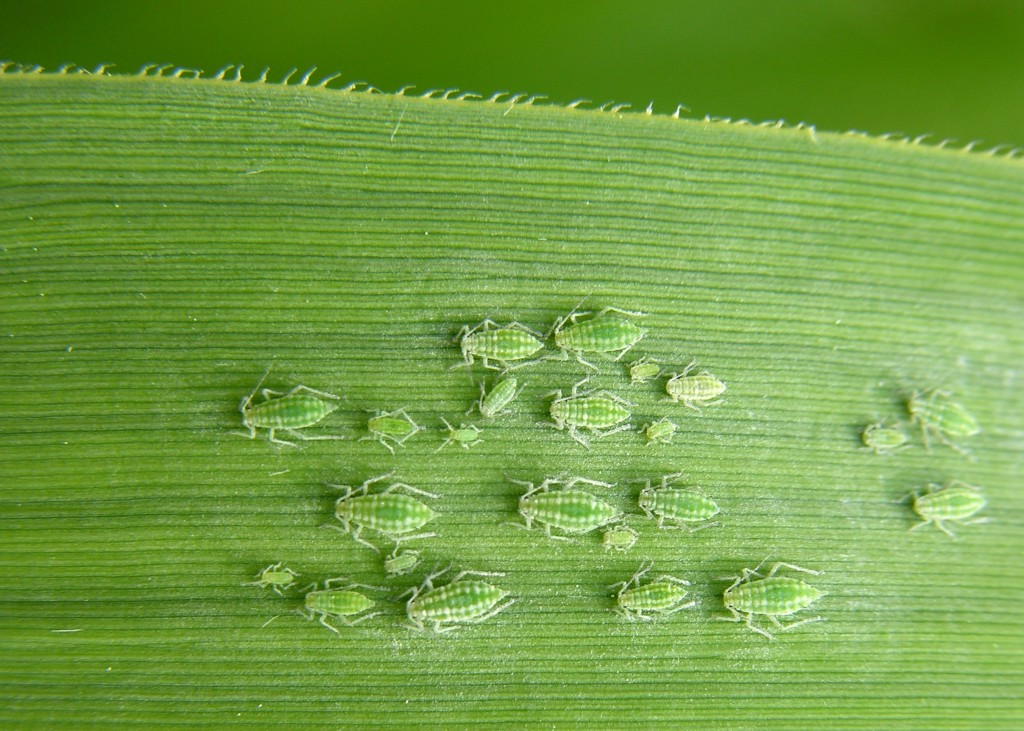
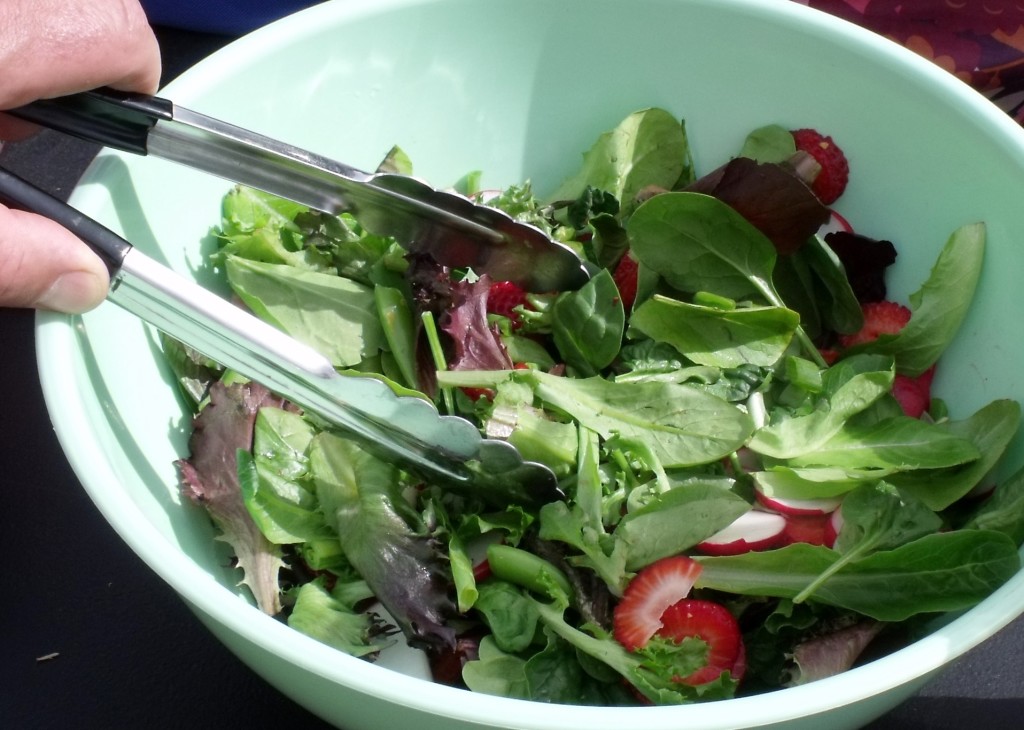
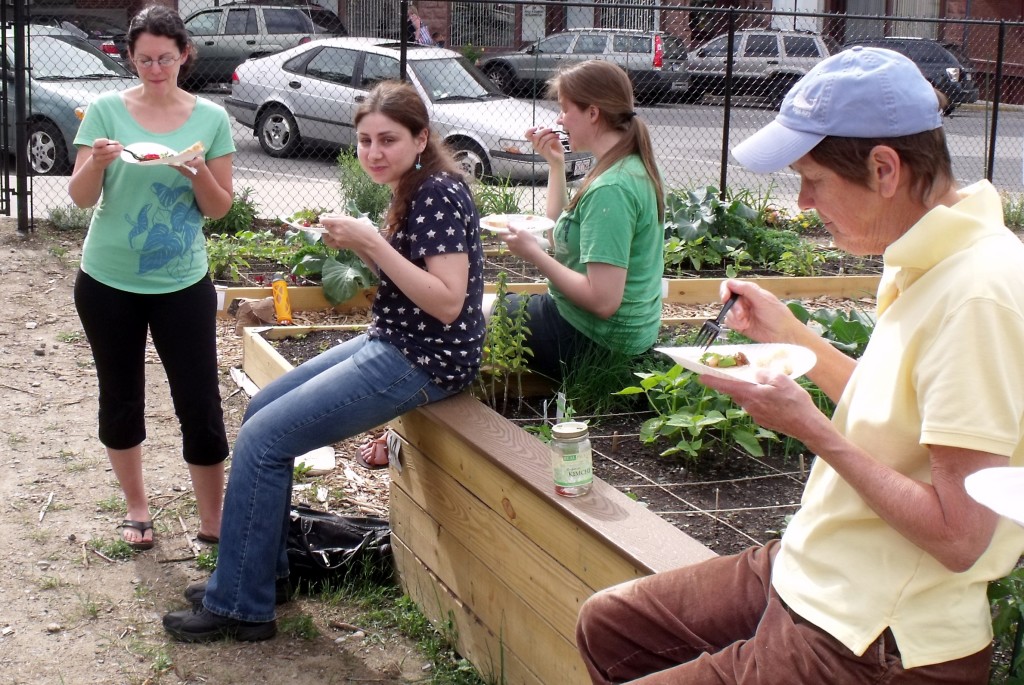
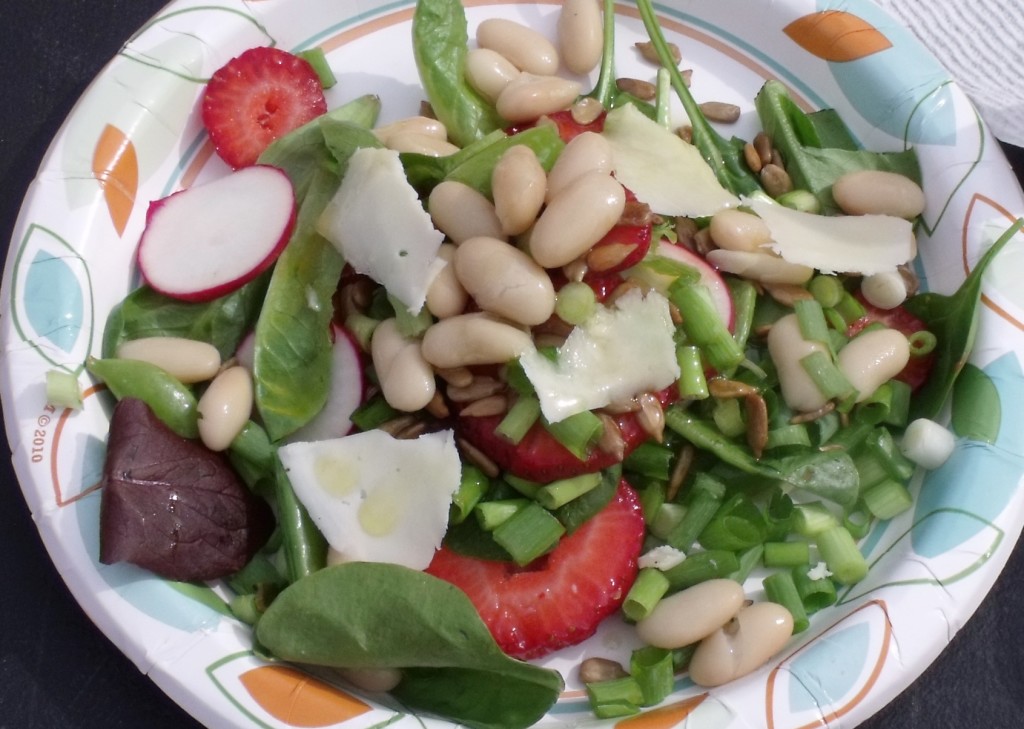

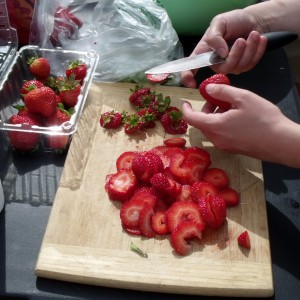




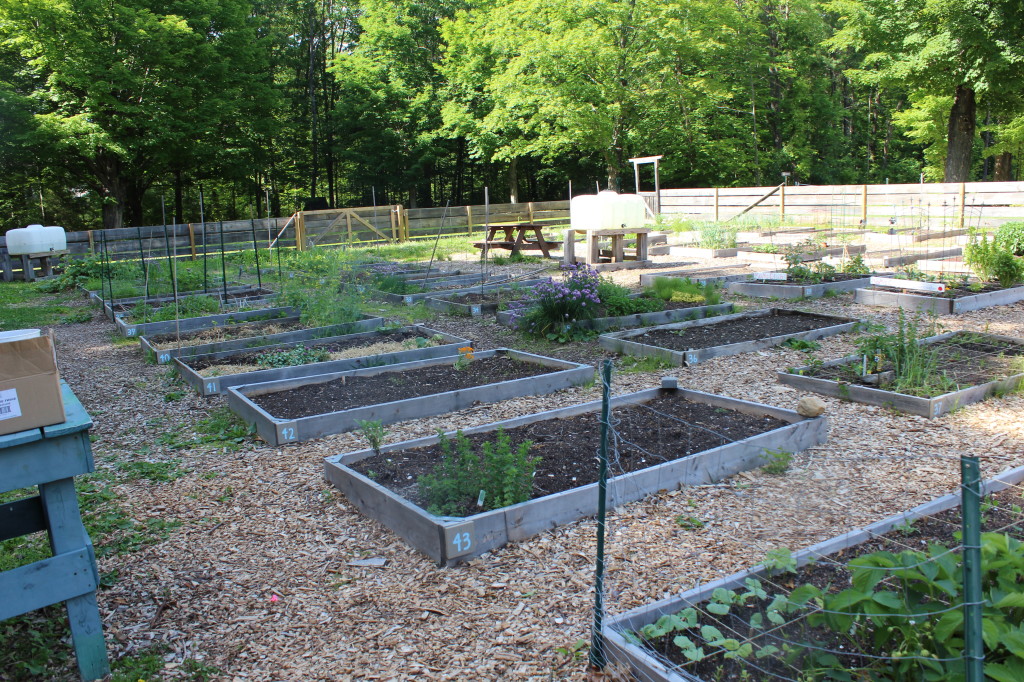
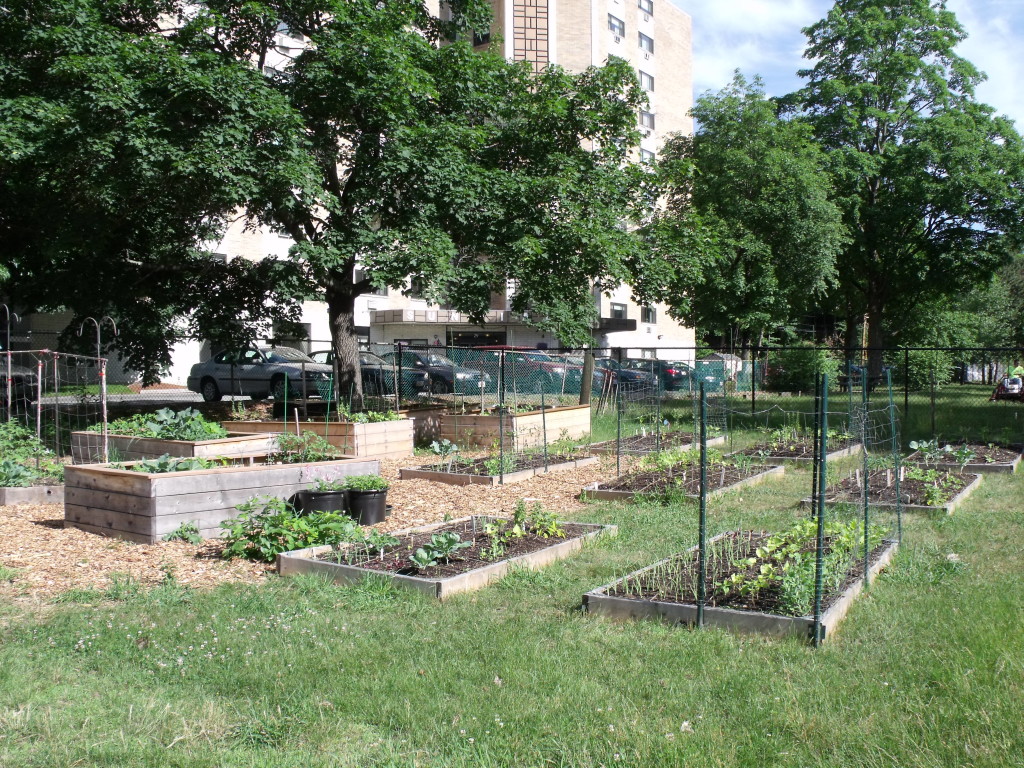
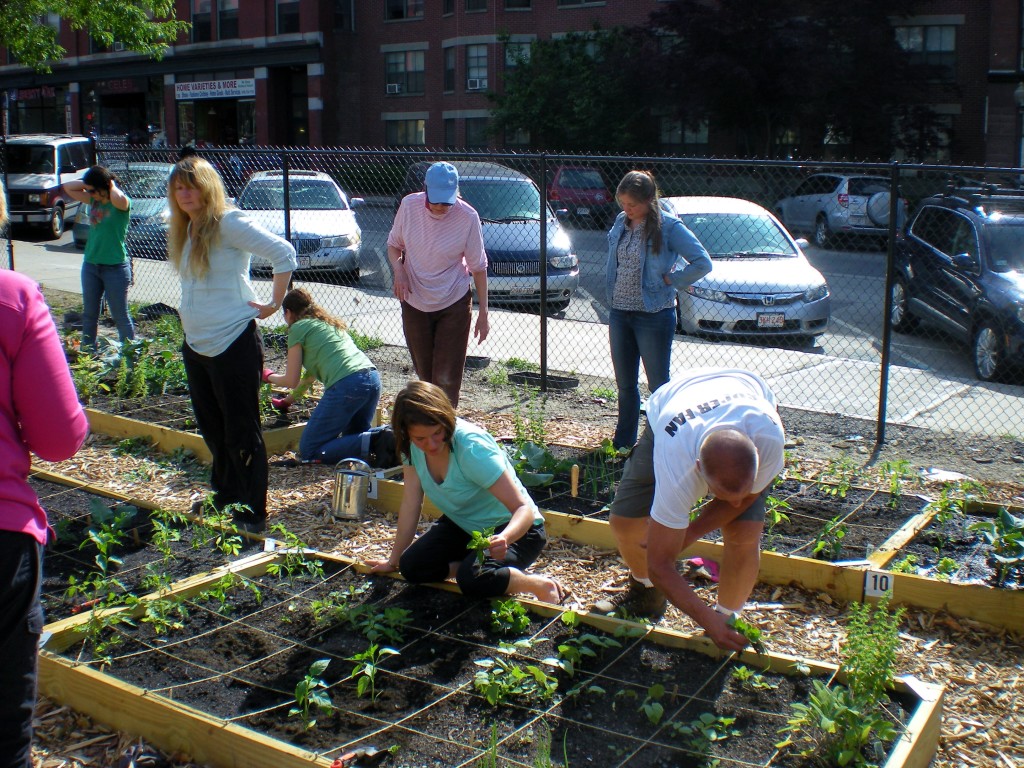
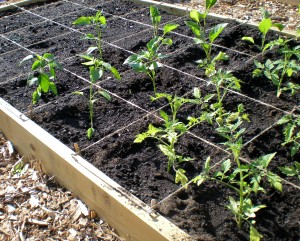 understanding the location of your garden – and all that might mean – is critical, our weekly Teaching Garden lessons operate much the same regardless of the setting. Simply put, we teach people to garden by gardening together. This encompasses observing and responding to whatever curve balls a garden site throws at us as well as building a strong sense of community.
understanding the location of your garden – and all that might mean – is critical, our weekly Teaching Garden lessons operate much the same regardless of the setting. Simply put, we teach people to garden by gardening together. This encompasses observing and responding to whatever curve balls a garden site throws at us as well as building a strong sense of community.